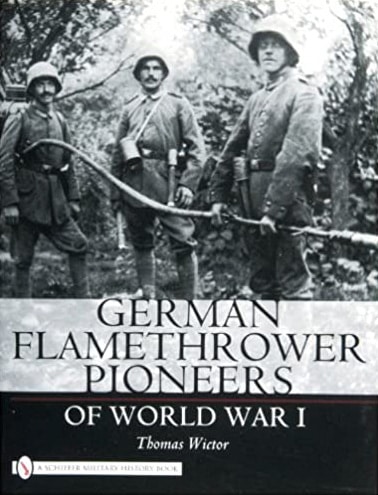Flammenwerfer — World War I German Flamethrowers
January 14th, 2023
9 minute read
War is a terrible beast that chews up soldiers and civilians alike. Total war pushes men to create new and more efficient ways of killing. But one of the most horrific is the flamethrower, a truly ghastly weapon.
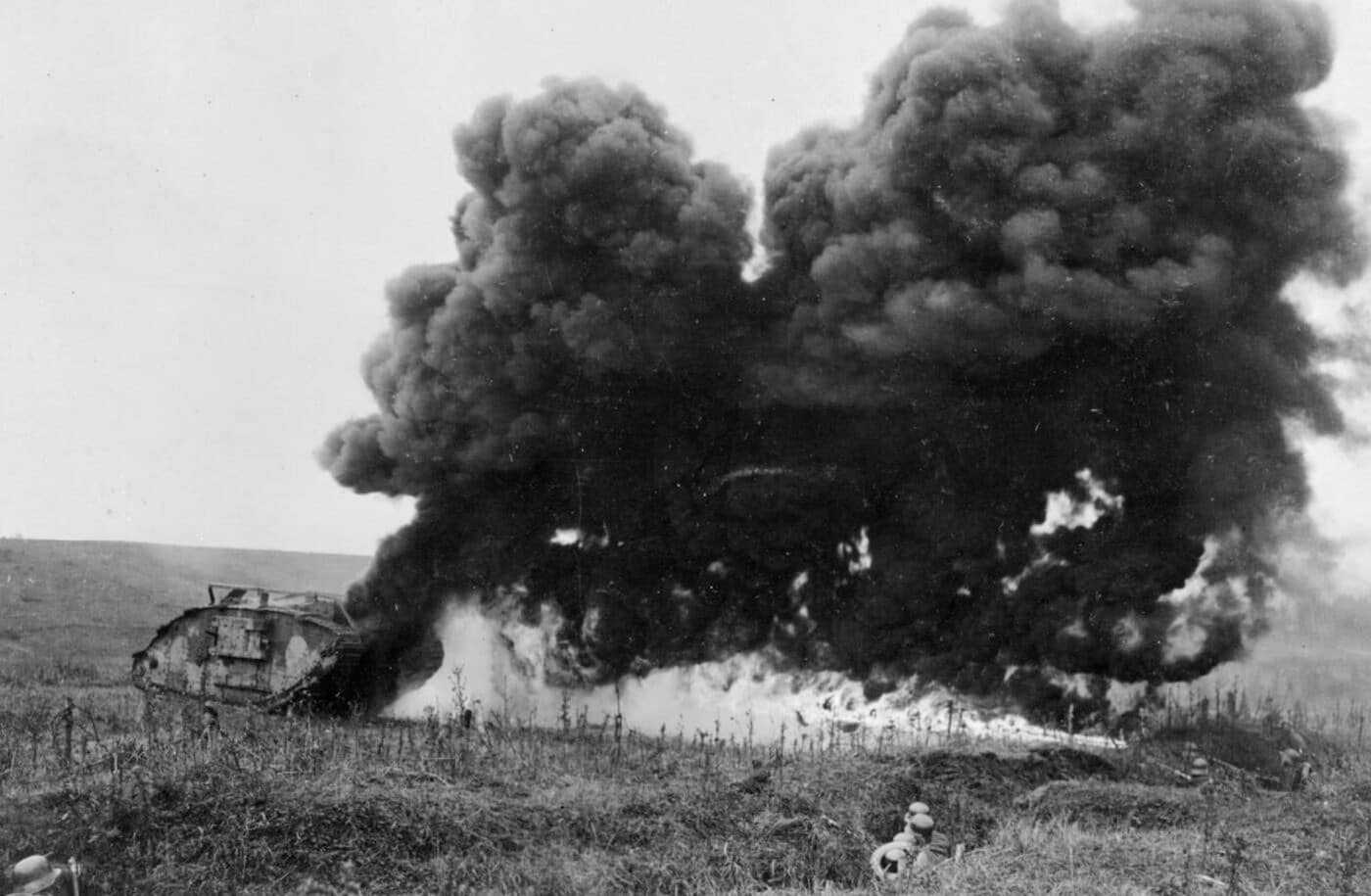
In World War I, the industrial revolution was turned loose on the battlefield. What was once considered by some to be a chivalrous venture was now truly a dreadful hellscape of barbed wire, poison gas and chattering machine guns.
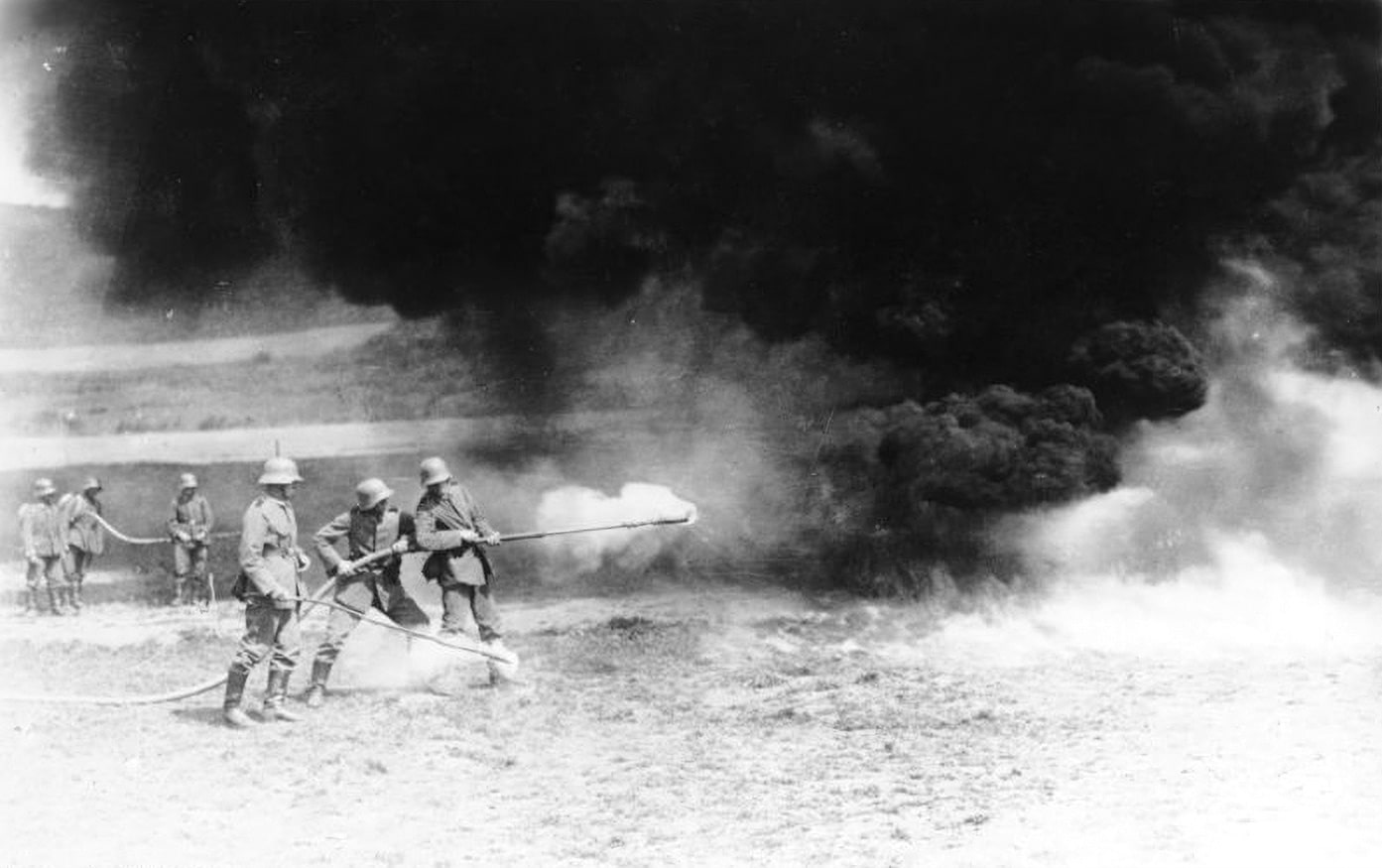
In a land of mechanized death, the flamethrower could push battle-hardened troops into genuine terror. The German army used this to its advantage and worked diligently to build and improve its flammenwerfer program.
Origins of Weaponized Fire
Fire is not a modern weapon. For more than 2,000 years, men have used fire on the battlefield to influence the outcome of wars. Ancient Chinese, Greek and Arabic warriors all used flame in some form or another. The Roman and Byzantine use of so-called Greek Fire in naval battles is the stuff of legend.
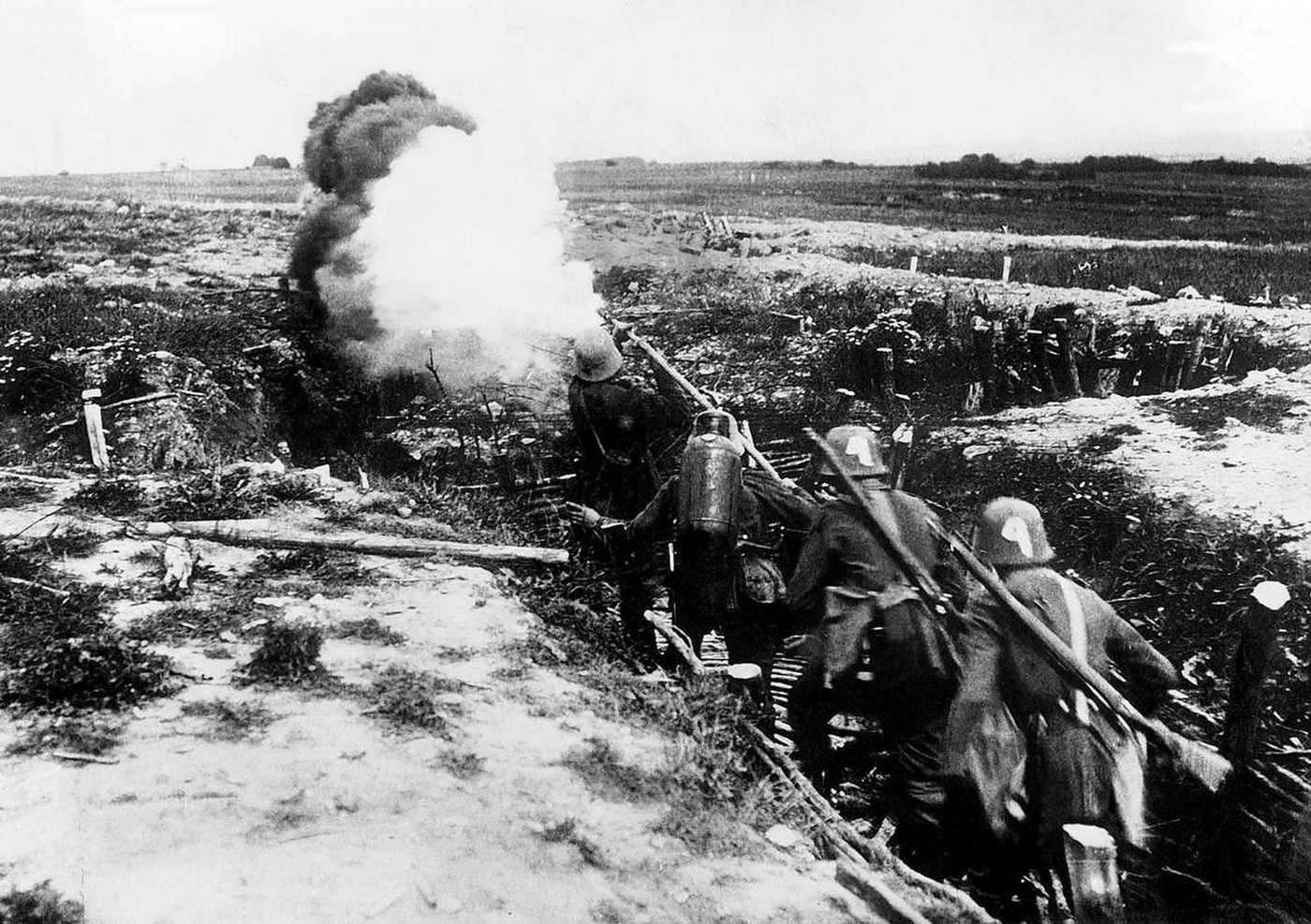
Both the Chinese and Arabs developed crude projectors that would dispense flammable oil through a variety of pumping mechanisms.
Flammenwerfer: The German Flamethrower
The term “flamethrower” derives from the German term “flammenwerfer.” What we know of as the modern flamethrower first came to prominence in World War I. However, much of the history of flamethrowers has been forgotten and replaced by myth and misinformation perpetuated by Hollywood and lazy historians alike.
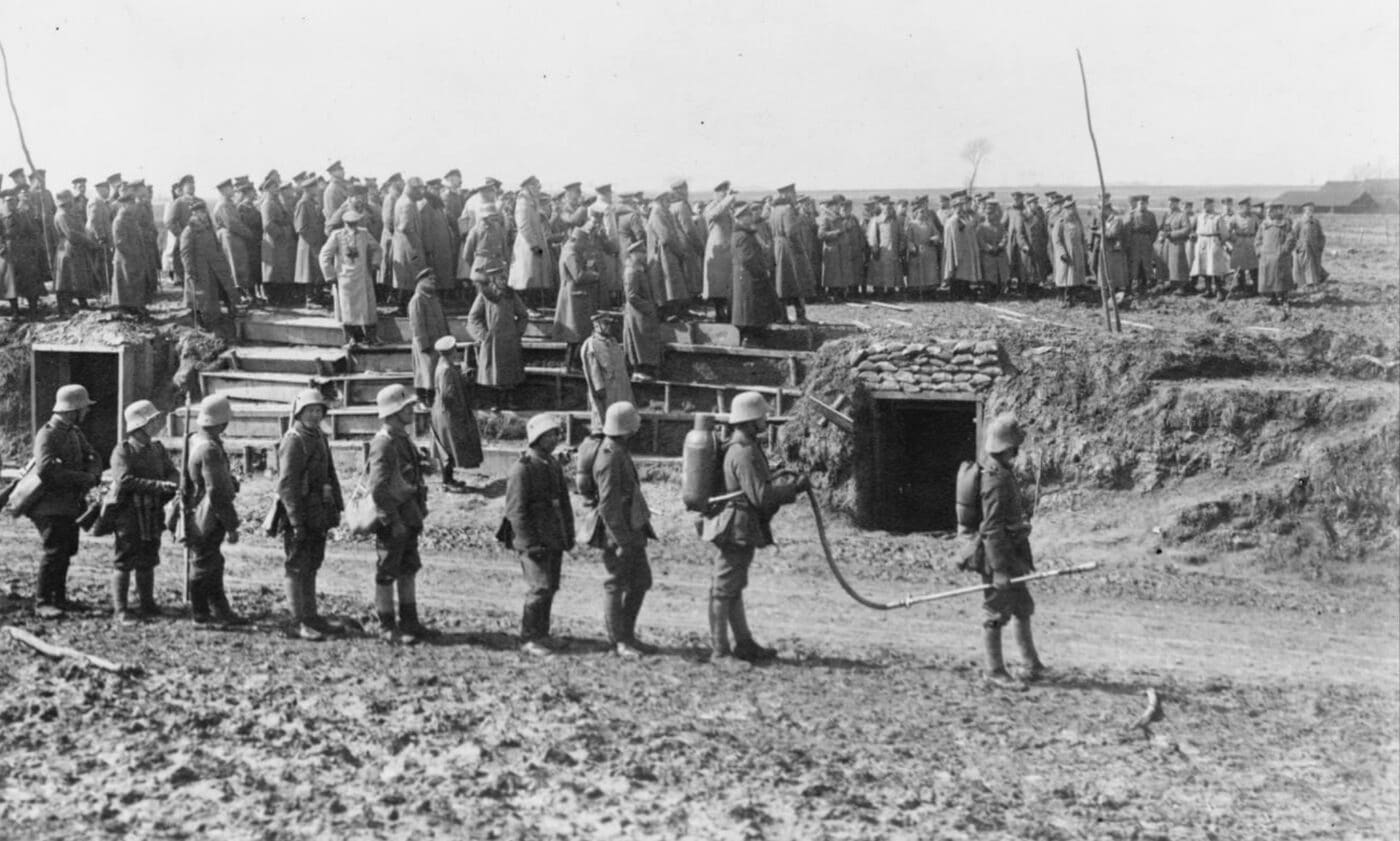
While some information on Germany’s use of flammenwerfers was lost during the Allied bombings of that country in World War II, a great deal of information remains in archives worldwide. One has but to look. Being able to read German helps.
Early Development
It appears the first flamethrower of modern design was patented in Germany by Richard Fiedler in 1901. During the same year, the German army funded his continued work on flamethrower designs. Fiedler, a private citizen, designed several flamethrowers models and presented a working product to the German army in 1905. Based on the feedback he received, two versions of the flammenwerfer were delivered to the army in 1908.
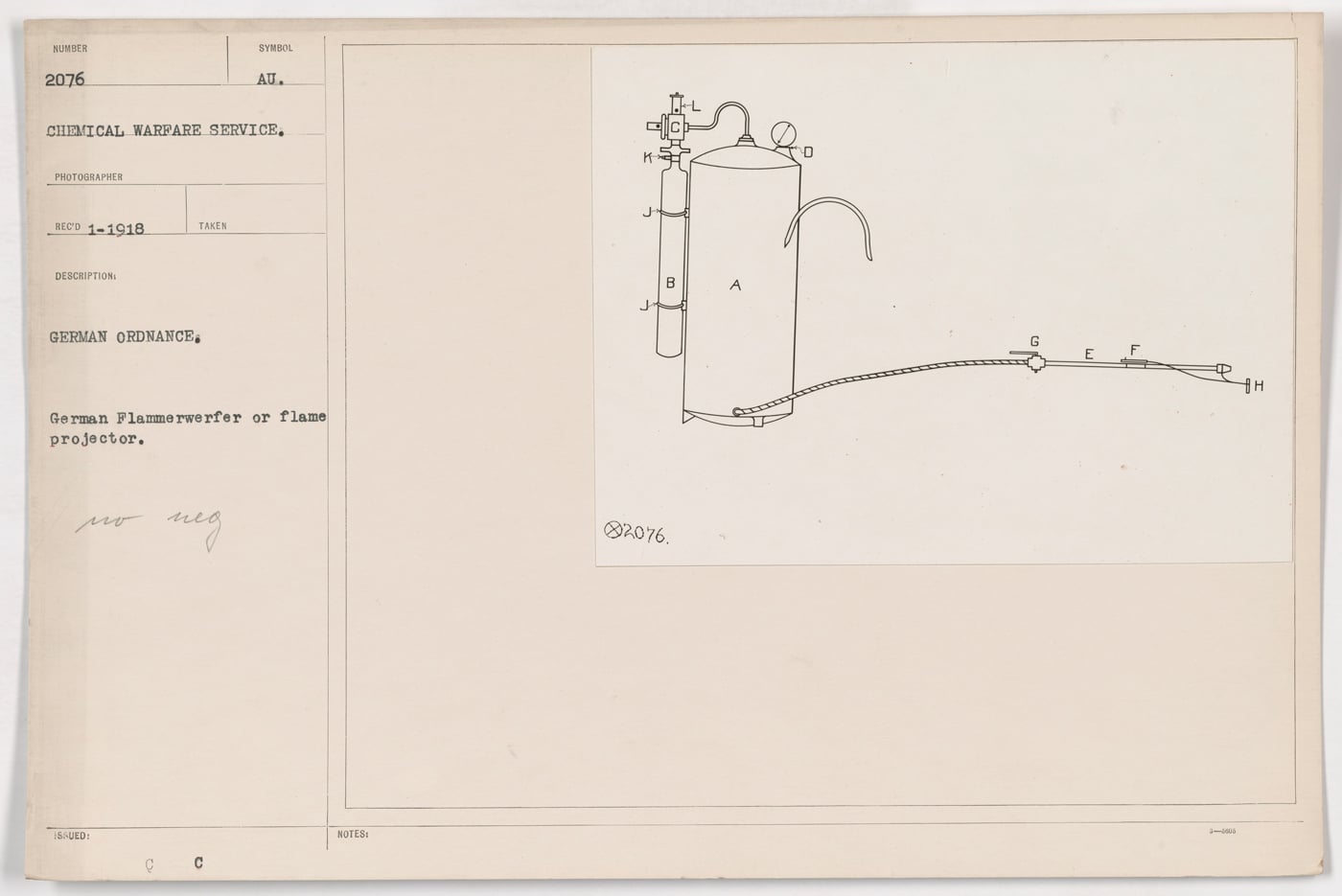
Around the same time, a multi-talented man by the name of Bernhard Reddemann began his own experiments in designing flamethrowers. Reddeman was an officer in a German Pioneer battalion until 1903. At that time, he transitioned to a reserve officer and stayed in a Pioneer unit. Pioneers were specialist troops frequently responsible for the demolition of fortifications, engineering strong points and using specialized weapons.
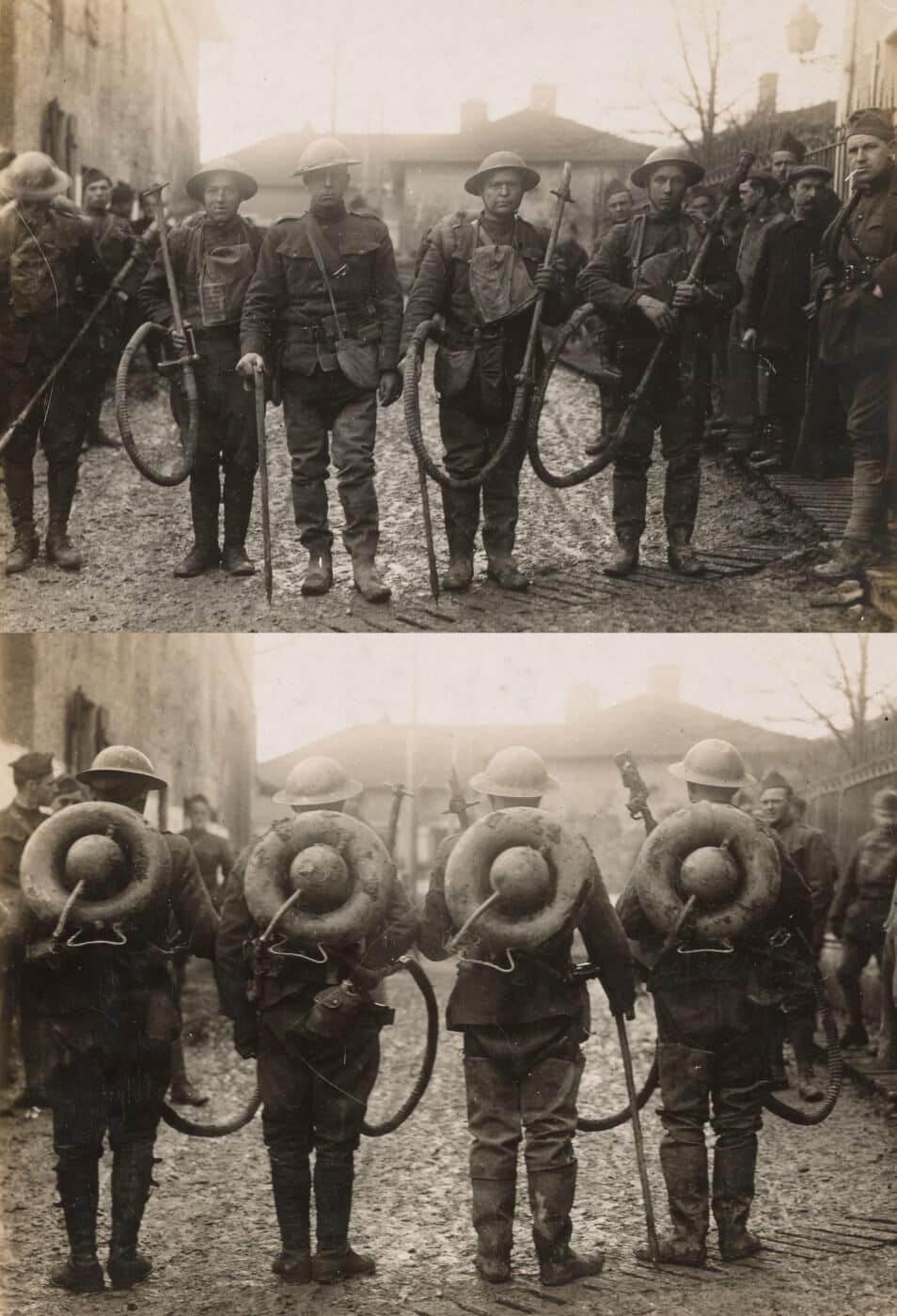
In civilian life, Reddeman was a fire chief with law and engineering degrees. He was intrigued by the use of kerosene as a weapon in the Russo-Japanese War of 1904-1905. Blending his knowledge of water pumping from firefighting with the idea of using fire against fortifications, Reddeman developed a flamethrower for the defense of a fixed position. Using firefighting pumping equipment, he experimented with various petroleum blends to find a mixture that would work.
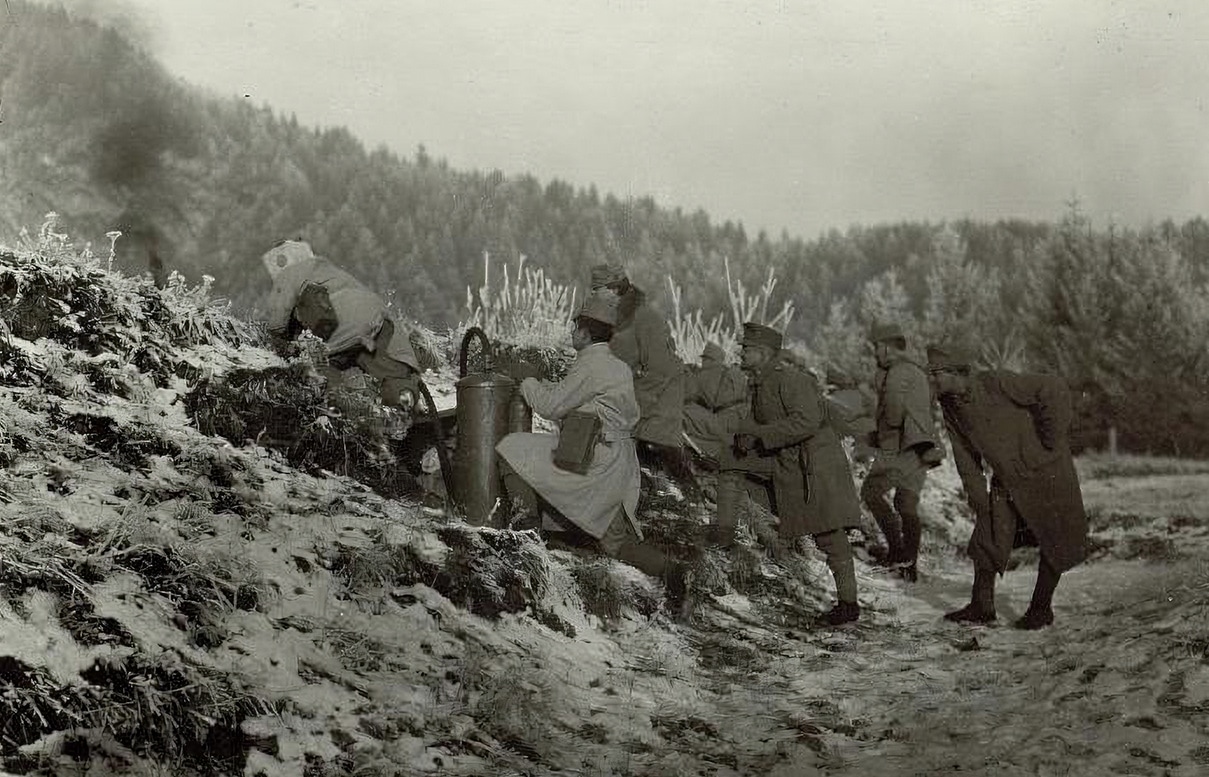
Once the war started, Reddemann returned to active duty. By the second year of the war, he headed a battalion of flamethrower Pioneers. Based on their successes, a flammenwerfer regiment was raised under Reddemann’s command. It could easily be argued that if Fiedler is the inventor of the modern flamethrower, Reddemann was the tactician who made the weapon viable on the battlefield.
German Flamethrower Types
When Fiedler delivered his flamethrowers to the army in 1908, he presented two designs: the Grossflamenwerfer and Kleinflammenwerfer. Both went through a number of evolutionary changes, frequently based on the feedback from Reddemann’s Pioneers.
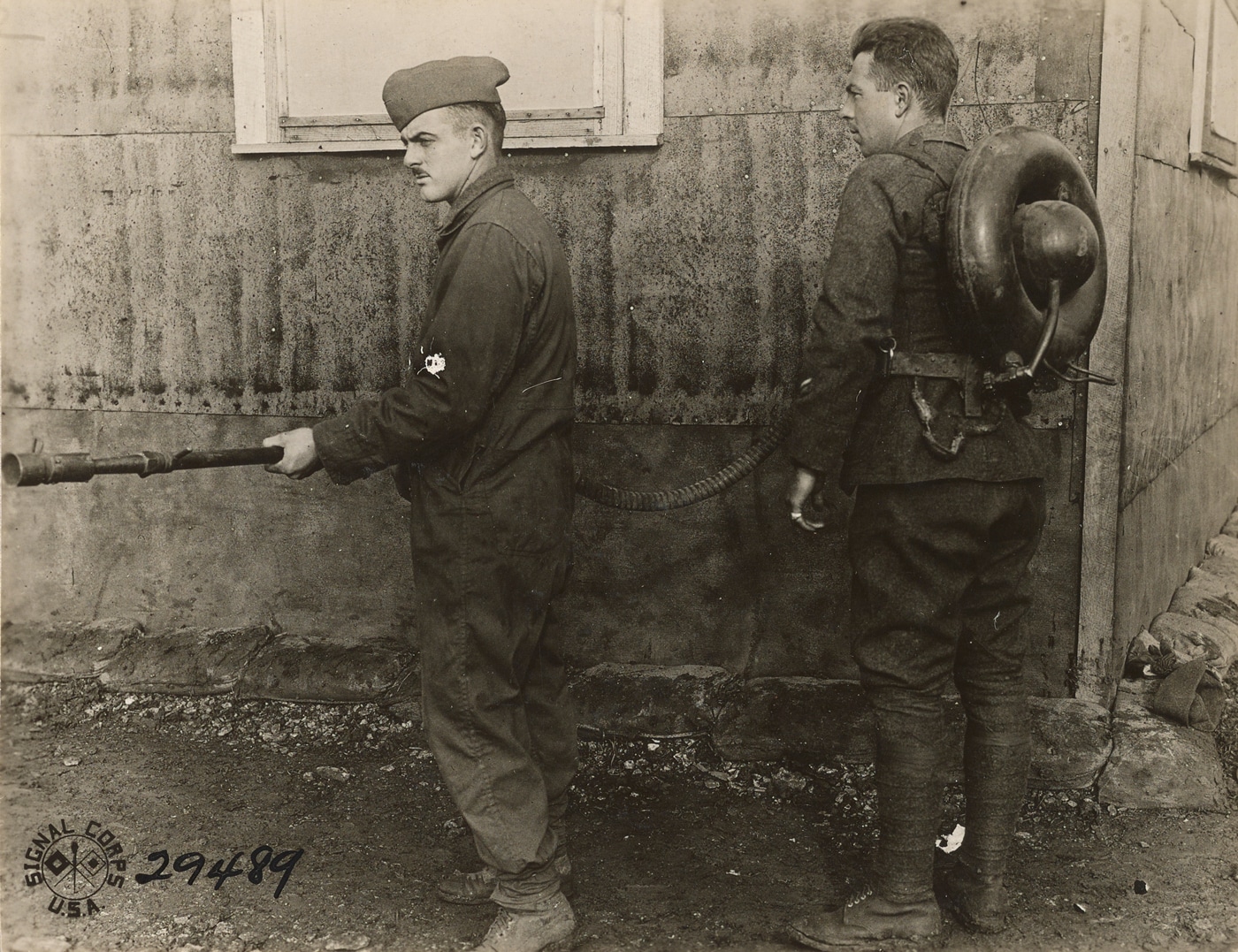
A third German flamethrower was the Wechselapparat. It was introduced later in the war and was more portable. It was not a Fiedler design.
Several additional designs were undoubtedly attempted. I’ve not found any documentation of their use save one: the Schlayer Sprayer. Developed by a motor cavalry officer, the Schlayer Sprayer had one documented (and successful) use in 1915. Unlike the other flamethrowers that used heavier petroleum mixes, the Schlayer used gasoline.
Grossflammenwerfer
The largest German flamethrower of the war was the Fiedler-designed Grossflamenwerfer. Also known as the grosse Flammenwerfer, or Grof for short, this was much too large to be man-portable.
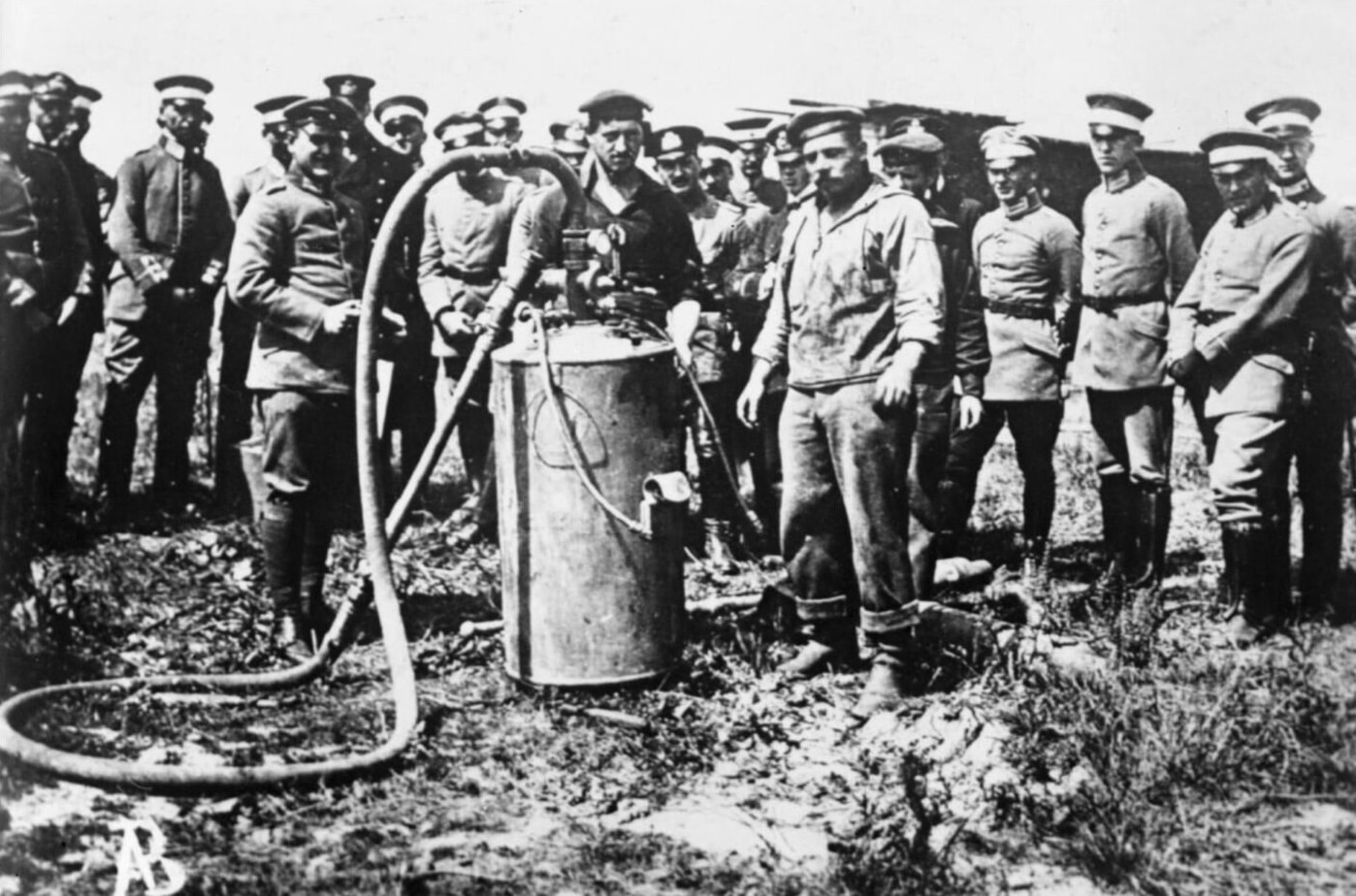
Instead, the Grof had a long hose connected to stationary fuel and propellant canisters. The soldiers would attack from their trenches using the hose for mobility. Ironically, this is similar to how many firefighters use water lines to attack and extinguish a fire.
Since the Grof was not intended to be portable, it was not hindered by weight and size restrictions. Consequently, the Grof M.1912 could spray fire for about 40-50 continuous seconds up to 40 yards. The M.1916 version allowed the operators to connect multiple tanks and hoses to provide additional tactical options.
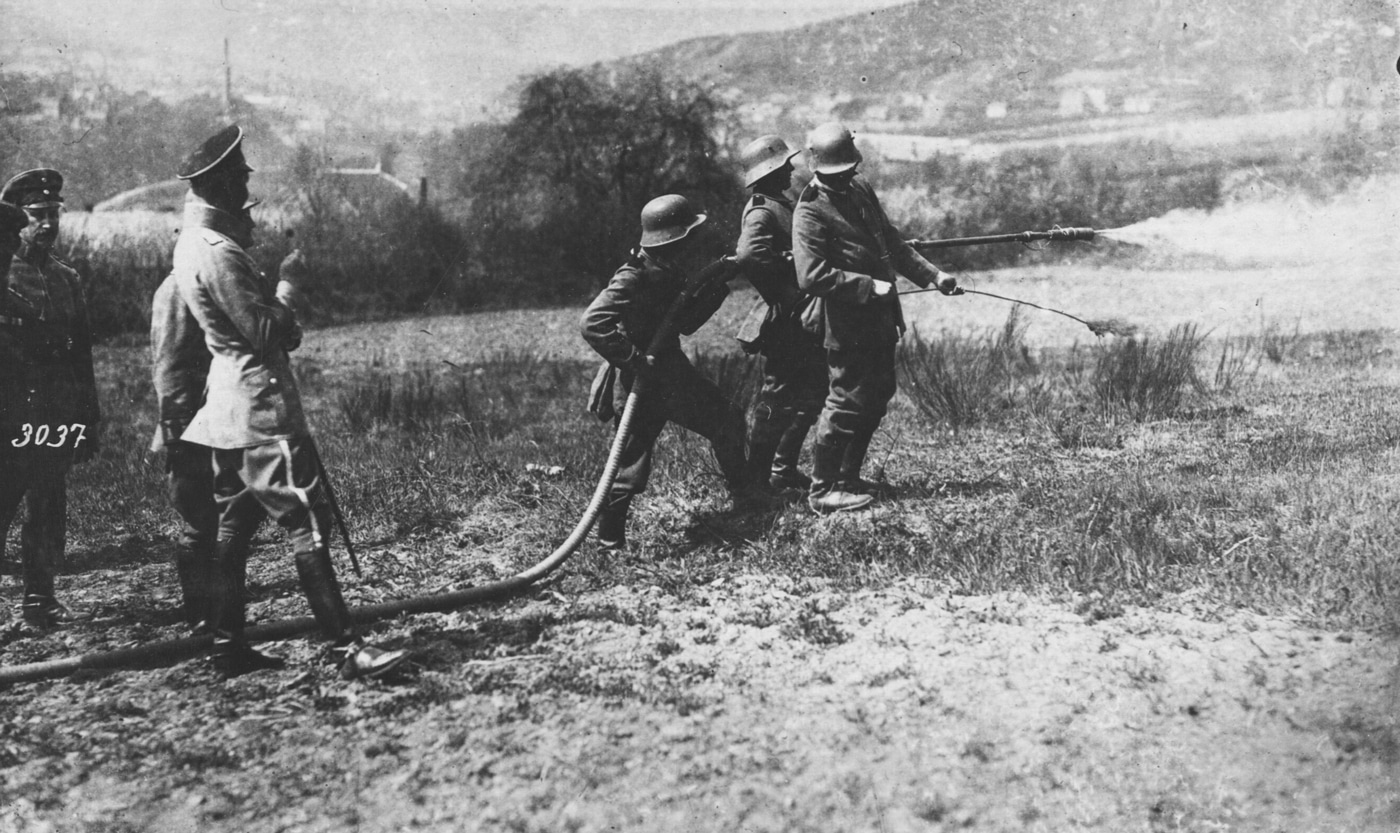
Grofs were typically operated by a team of five men and were used in stationary attacks. Stationary attacks were possible as many of the enemy trenches were very close to the German lines. During stationary attacks, Grof operators would often arc the spray such that the fire would rain into the enemy trenches instead of firing directly across the top of them.
Kleinflammenwerfer
The Kleinflammenwerfer was a man-portable flamethrower developed by Fiedler. It is also called the klein Flammenwerfer or Kleif. Kleif flamethrowers consisted of a fuel tank with a propellant, that was worn as a backpack, along with a long tube and lance for directing the spray of fire. The smaller nature of the Kleif limited the spray to about 20-30 yards with a probable continuous spray time of 20-40 seconds.
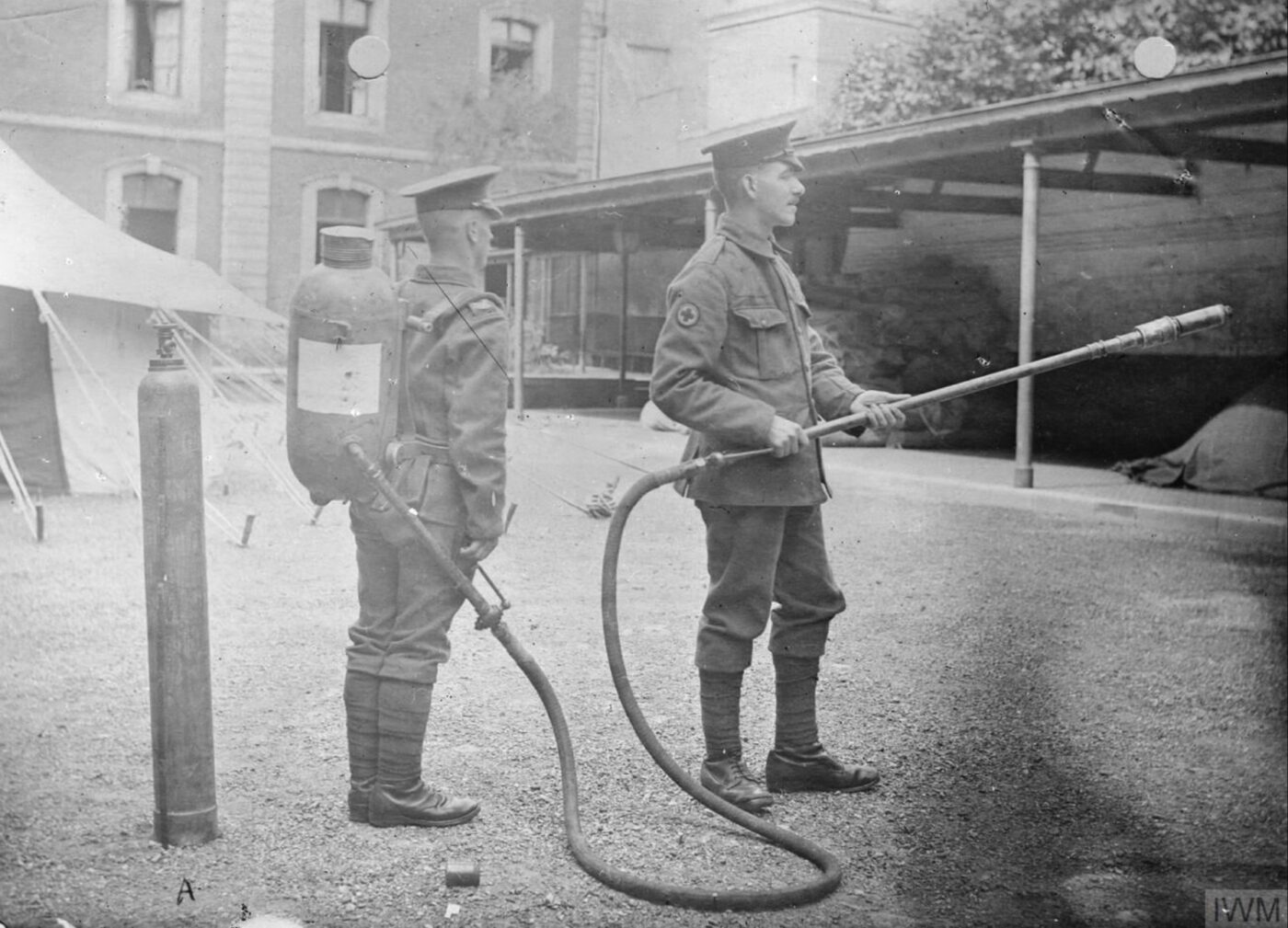
Although portable, these were not one-man devices. Kleifs were used in teams — typically four-man squads. One man with an assistant carried the tank while another man operated the lance (nozzle). The fourth man was a specially trained assaulter who would use grenades and trench weapons to help force the enemy from his trench.
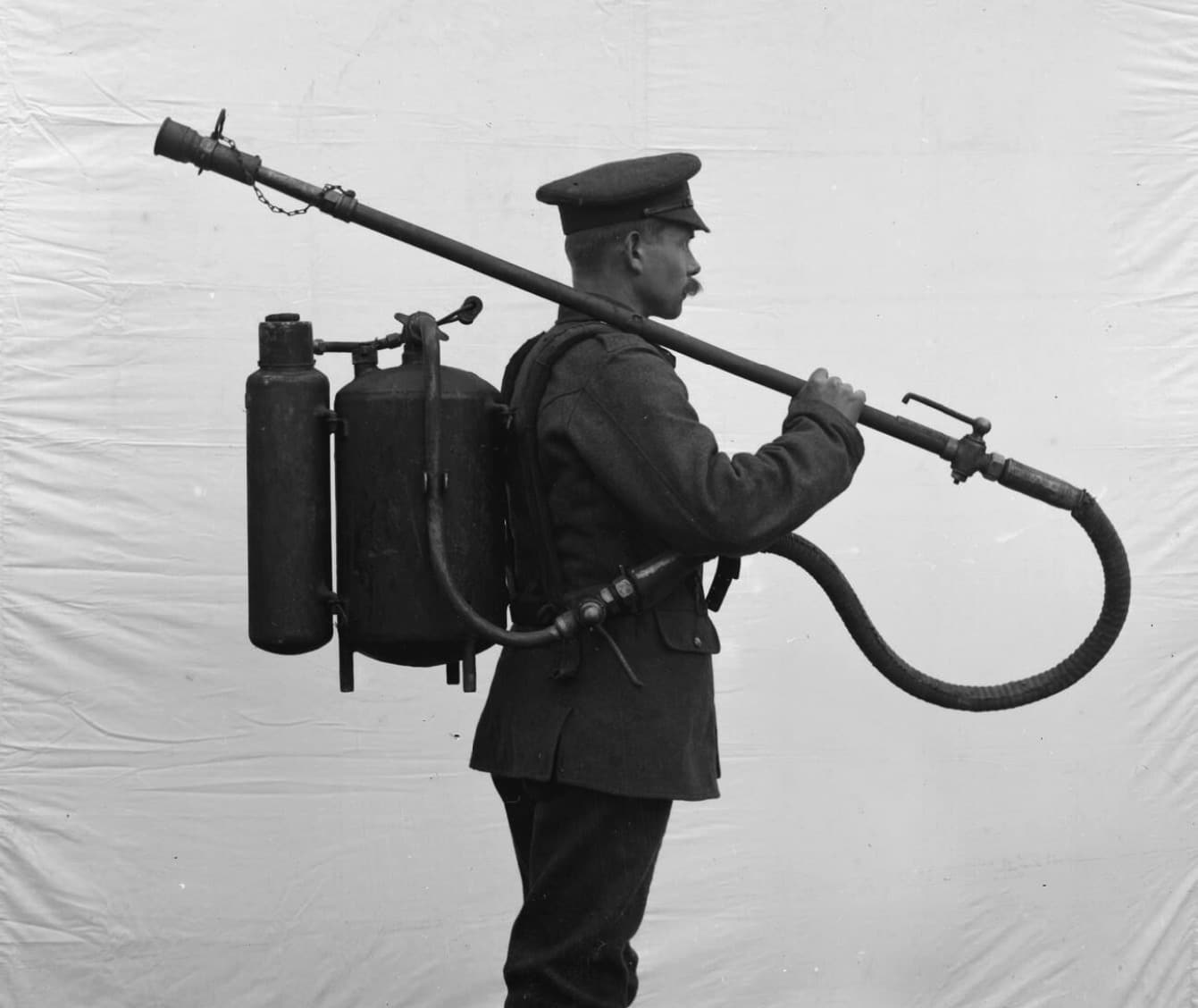
Kleifs were often used in pouncing attacks where the teams would approach the flanks of the enemy well ahead of their own infantry. Some of the most successful operations were combined attacks using Grofs for stationary attacks with Kleifs used for pouncing attacks to penetrate deeper into enemy lines than a Grof could manage alone.
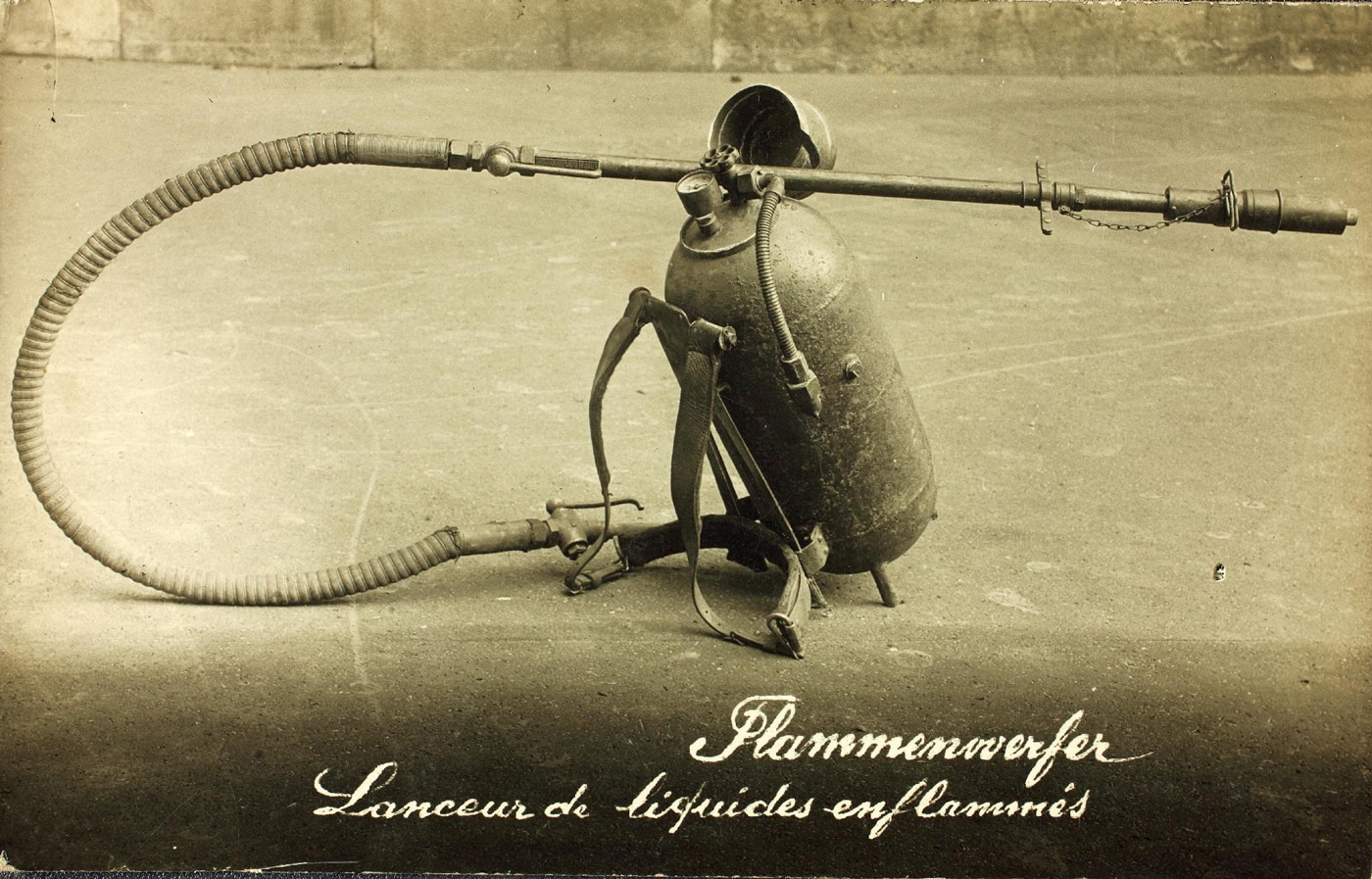
Multiple variations of the Kleifs were developed during the course of the war, but none were ever operable by a single man. In 1917, new Kleif models were renamed to mittlere Flammenwerfers as a new, more portable flamethrower was developed.
Wechselapparat
Wechselapparat, or Wex, flamethrowers were introduced to the field in 1917. These units had a distinctive circular backpack-style tank system.
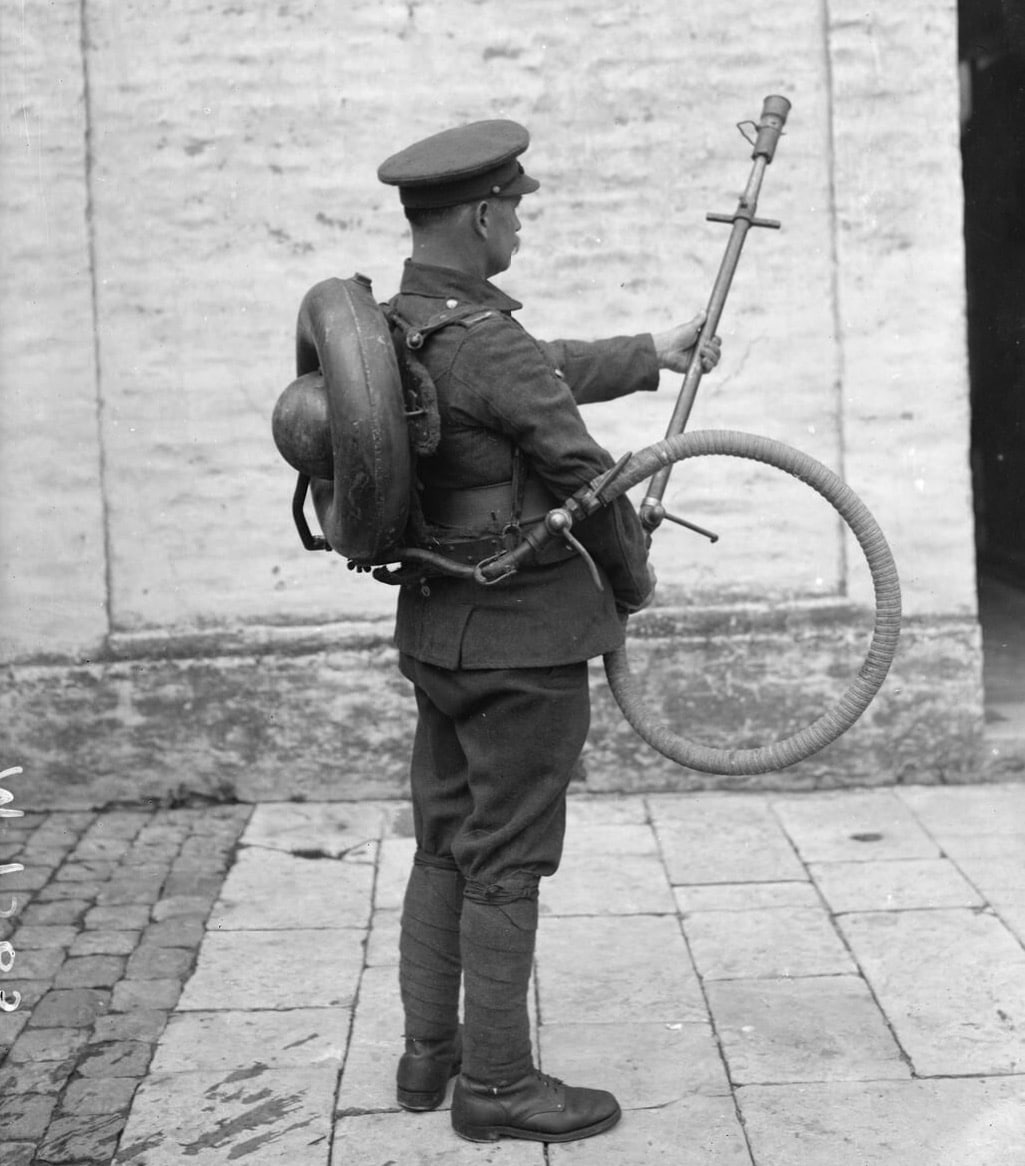
As with the Kleif, the Wex was operated by a four-man team. However, the Wex was technically operable by a single person — though I cannot imagine it would be easy to do. It is likely that flammenwerfer troops were trained in how to use the Wex solo, but all of the documentation I’ve found suggests that the team approach was the standard doctrine.
Tactics and Use
Movies and many history books would have us believe that German flamethrower troops acted alone and were not terribly effective on the battlefield. However, the truth seems to be quite the opposite. Allied writings and dispatches of the time suggest that German flamethrower attacks were frequently successful. As a result, many of the Allied nations began their own development of flamethrowers.
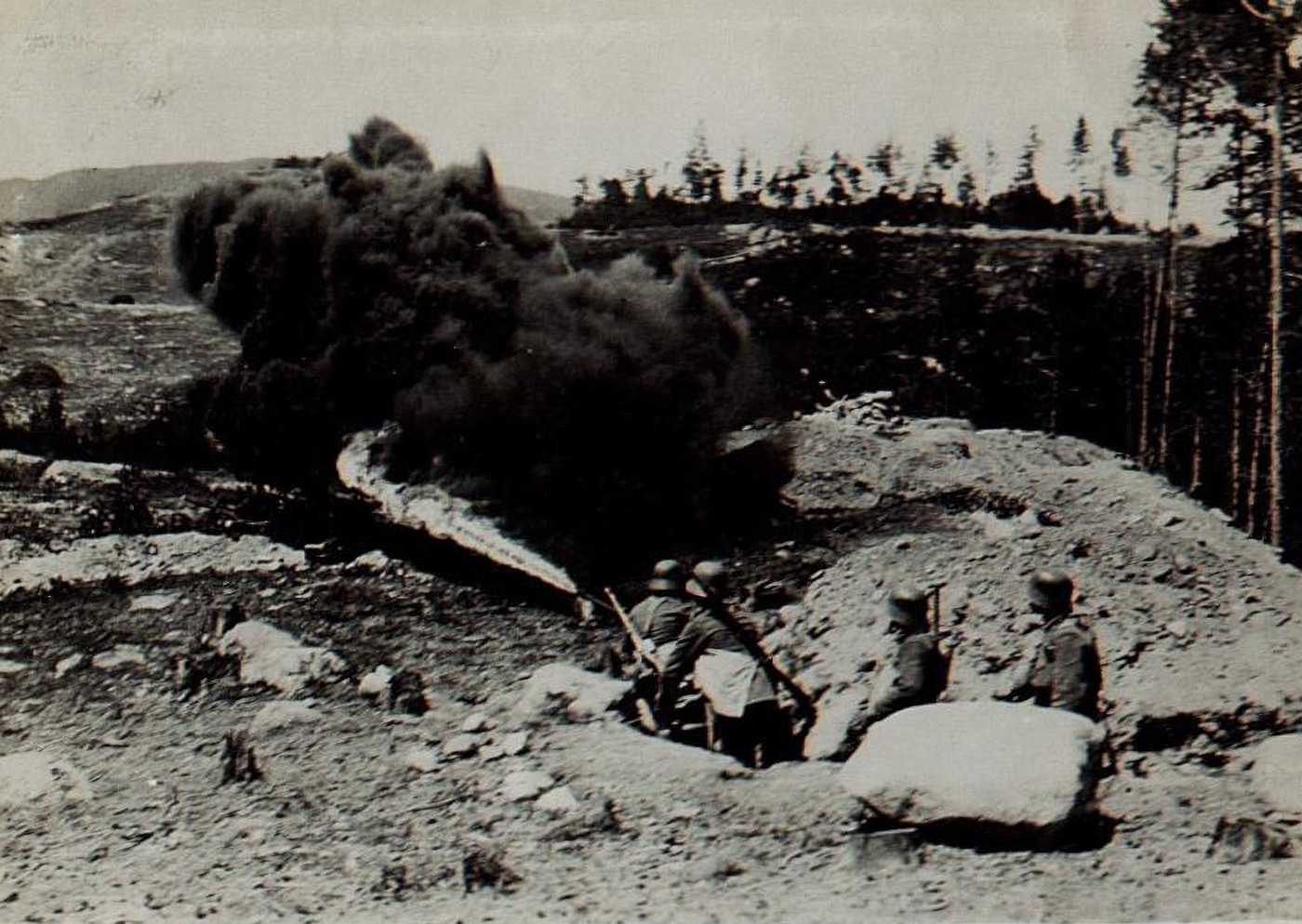
Additionally, records kept by Reddemann suggest that his specialized flammenwerfer Pioneers were successful in more than 80% of their attacks. This included a high degree of success against hardened positions and Allied tanks. Further Reddeman’s Pioneers recorded only 890 deaths during the four years the flammenwerfer troops — of which there were thousands — operated under his command. That is despite these men being at the leading edge of the attacks across No Man’s Land and undoubtedly hated by Allied soldiers.
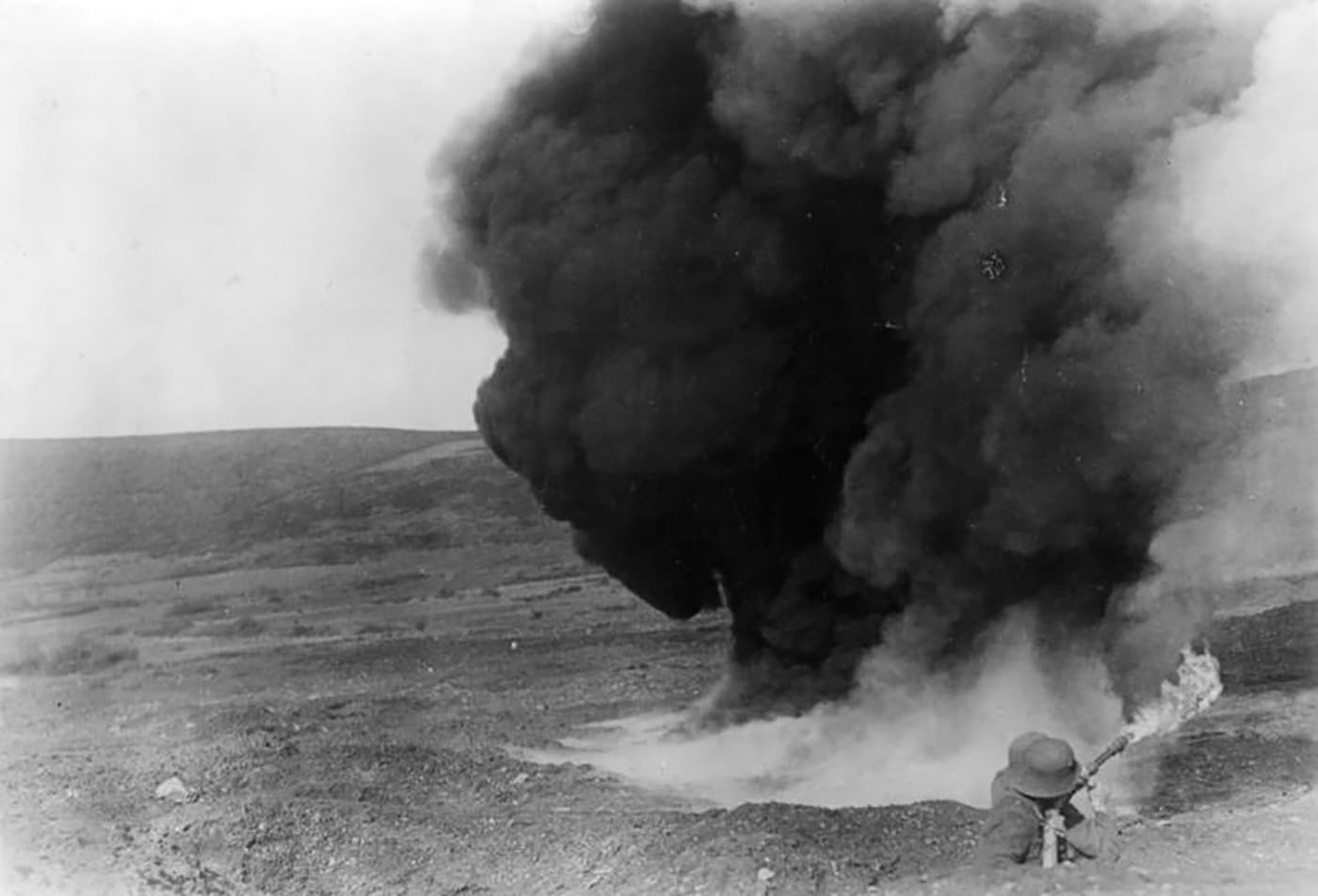
A large part of the German flamethrower success came from the use of the team tactics the Pioneers developed. These units tested and refined various attack methods that proved quite formidable. Additionally, Reddemann’s flamethrower troops were kept under the control of the Supreme Army Command so they could be used only where the tools were likely to be of the most benefit.
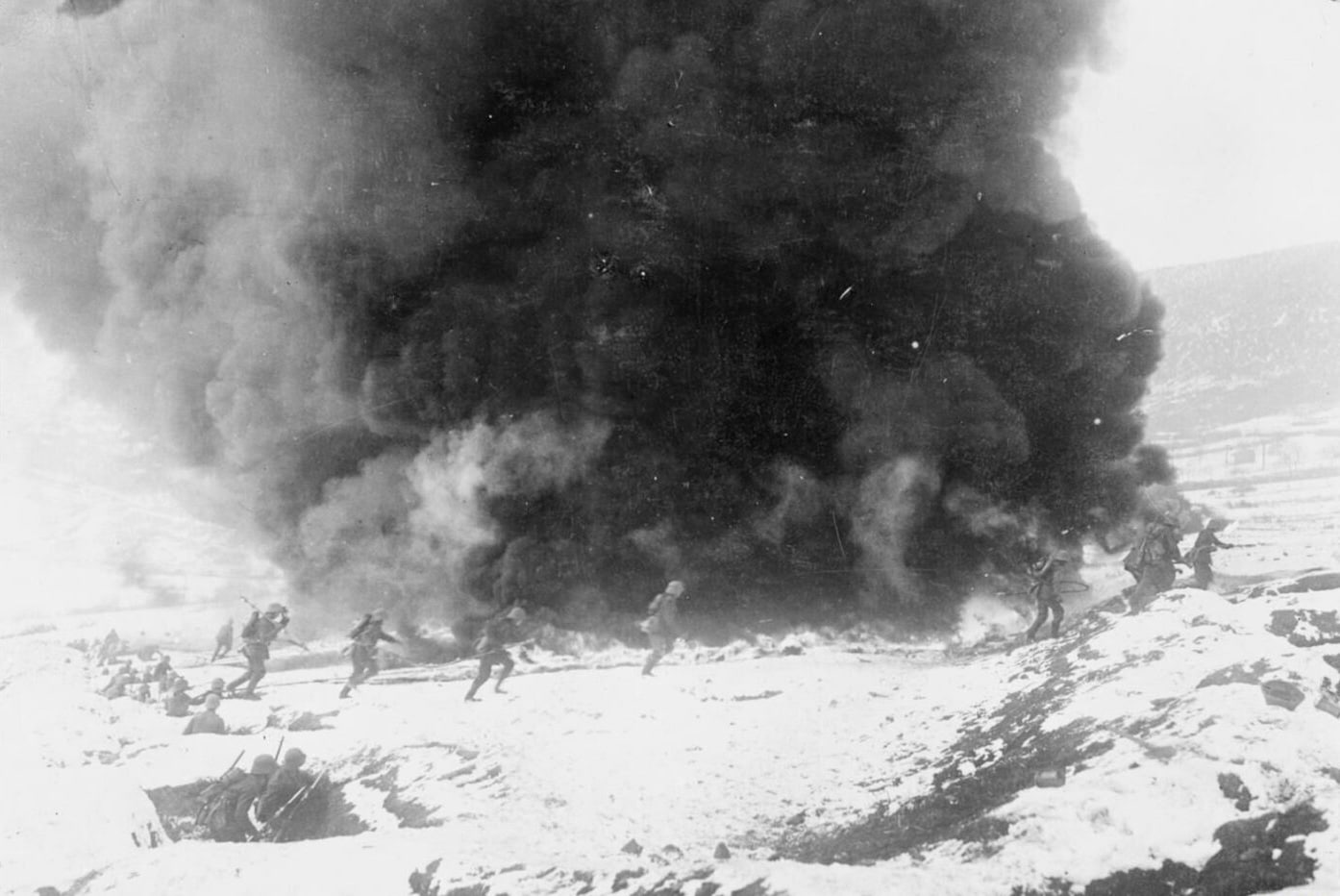
Prior to 1915, the flamethrower teams were not organized and were used piecemeal — often in cases where they could offer little tactical advantage. These early uses were often unsuccessful and the equipment proved troublesome. The early, ineffectual use in 1914 gave Reddeman the political ammunition he needed to form the specialized Pioneer units.
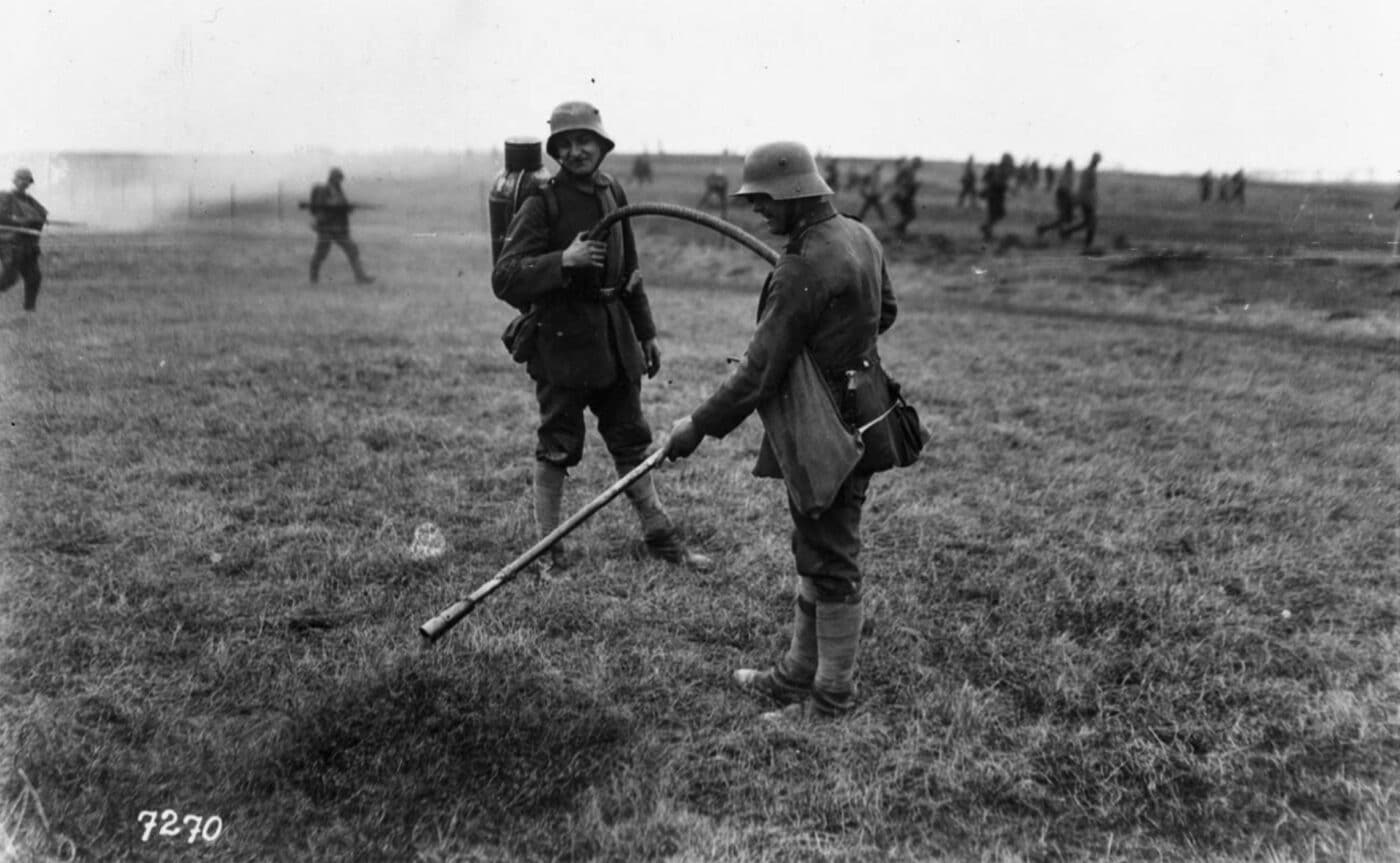
While some standard infantry units retained early flammenwerfer weapons throughout the war, they lacked the benefit of trained operators. It is believed these ad hoc infantry teams carried out many of the unsuccessful flamethrower attacks documented by Allied officers.
Final Thoughts
A great deal of common knowledge regarding German flamethrower use in World War I is simply wrong. While some information has been lost to time and the strategic bombings of Germany during the Second World War, much of it is still available if you decide to do the research.
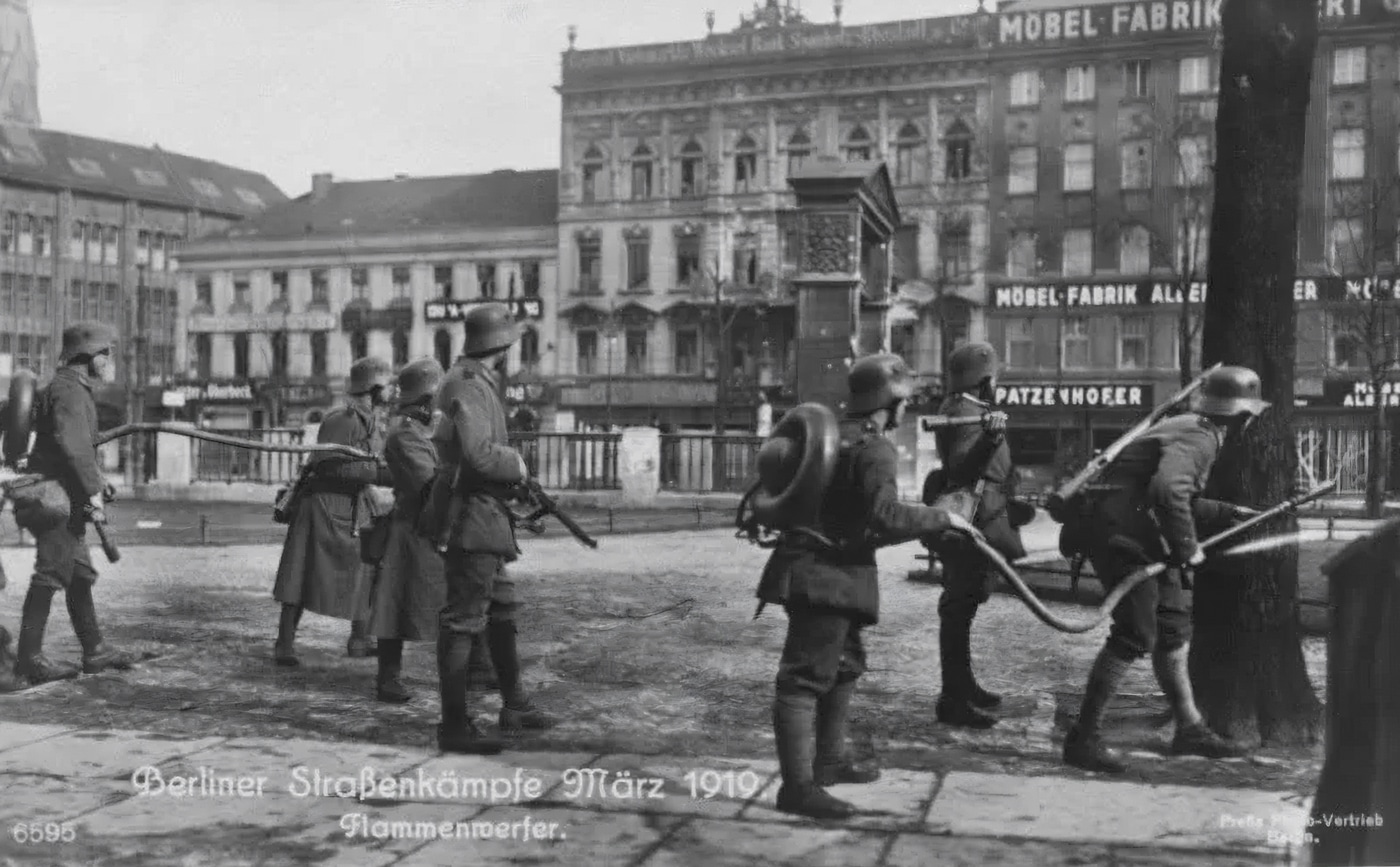
If you have an interest in these early flammenwerfer units, I recommend checking out the book “German Flamethrower Pioneers” by Thomas Wictor. Wictor does an exceptional job of documenting the development of the equipment and tactics used by the units. The breadth of information Wictor documented is breathtaking. It is an excellent start to anyone’s investigation into the modern flamethrower.
Editor’s Note: Please be sure to check out The Armory Life Forum, where you can comment about our daily articles, as well as just talk guns and gear. Click the “Go To Forum Thread” link below to jump in and discuss this article and much more!
Join the Discussion
Featured in this article
Continue Reading
Did you enjoy this article?

 284
284




